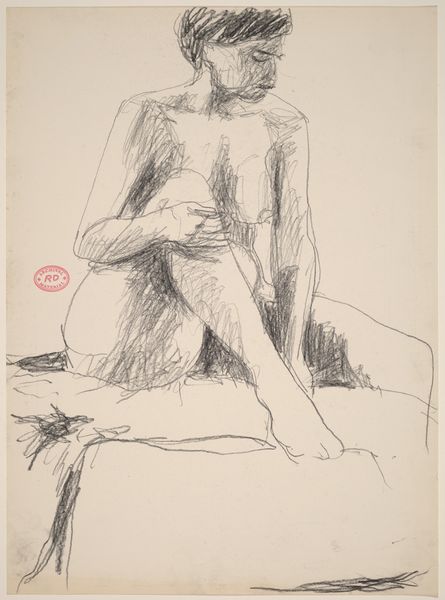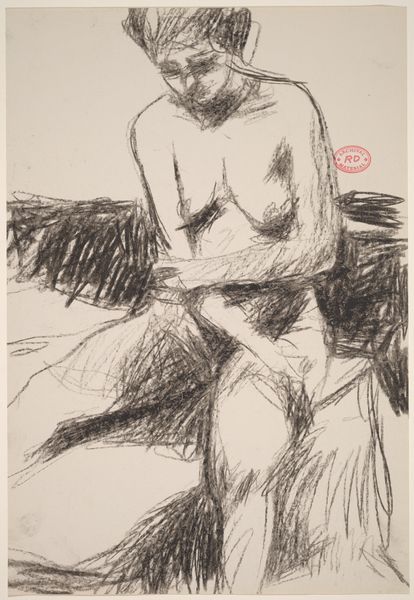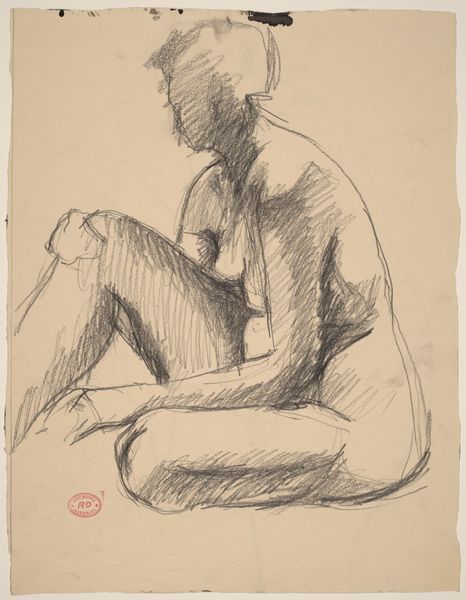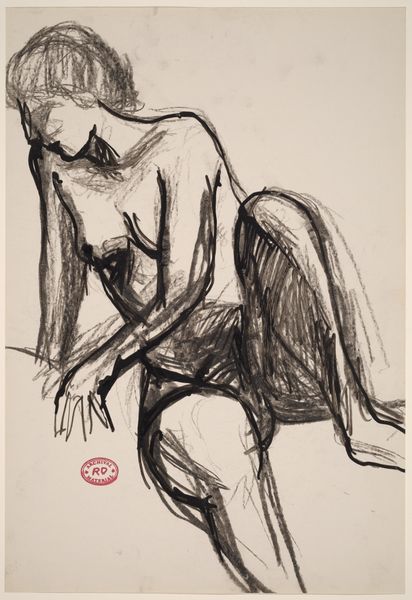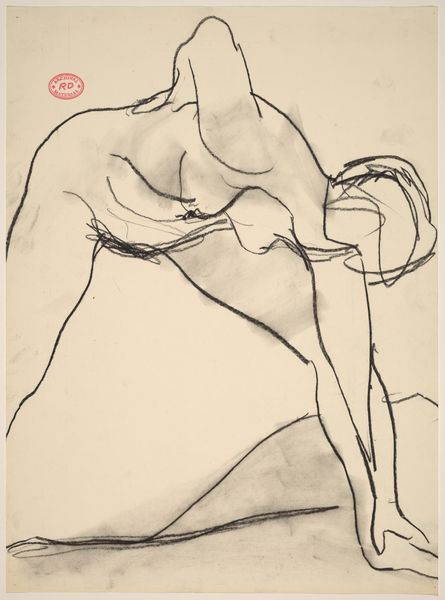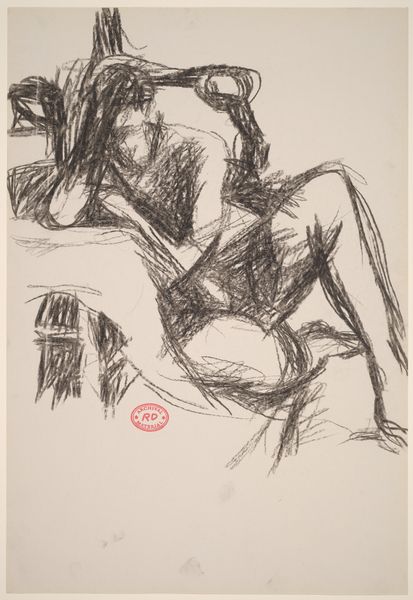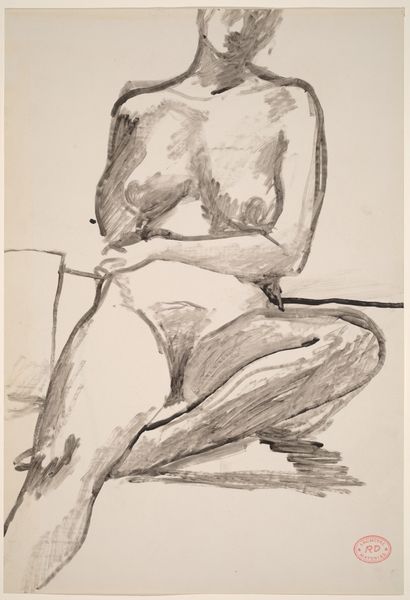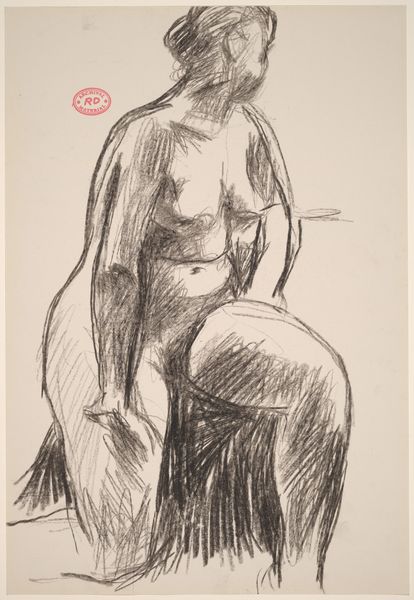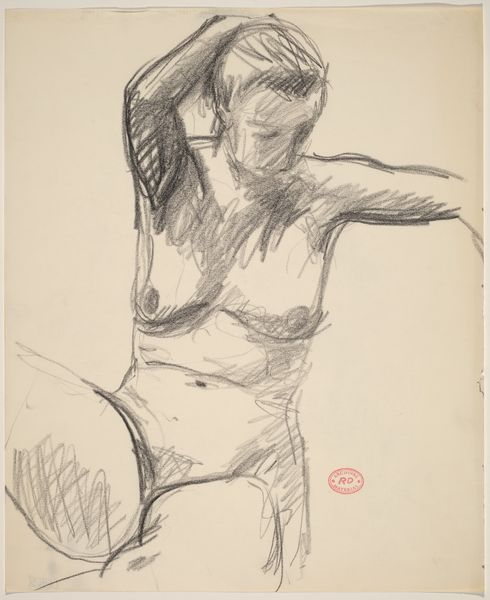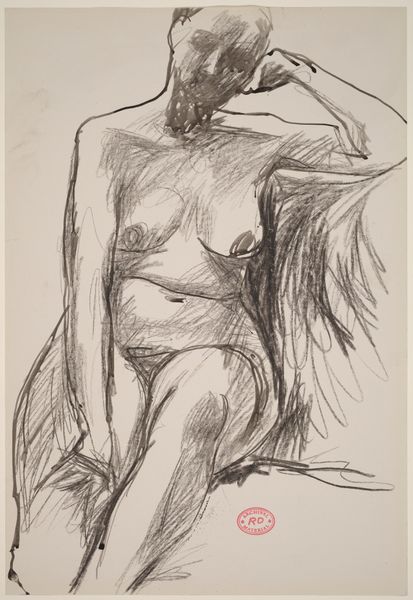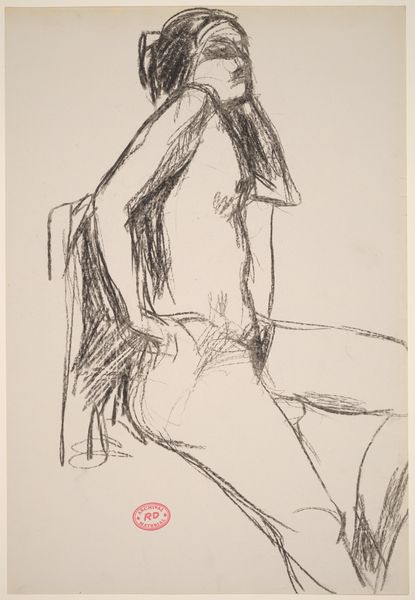![Untitled [seated model leaning with her right arm on a stool] by Richard Diebenkorn](/_next/image?url=https%3A%2F%2Fd2w8kbdekdi1gv.cloudfront.net%2FeyJidWNrZXQiOiAiYXJ0ZXJhLWltYWdlcy1idWNrZXQiLCAia2V5IjogImFydHdvcmtzLzkwNzVmOGI3LWE2YzctNGU2Yi05MThhLTNlZGE2MjI5MjlkZi85MDc1ZjhiNy1hNmM3LTRlNmItOTE4YS0zZWRhNjIyOTI5ZGZfZnVsbC5qcGciLCAiZWRpdHMiOiB7InJlc2l6ZSI6IHsid2lkdGgiOiAxOTIwLCAiaGVpZ2h0IjogMTkyMCwgImZpdCI6ICJpbnNpZGUifX19&w=3840&q=75)
Untitled [seated model leaning with her right arm on a stool] 1955 - 1967
0:00
0:00
drawing
#
landscape illustration sketch
#
drawing
#
light pencil work
#
ink drawing
#
pen sketch
#
pencil sketch
#
incomplete sketchy
#
personal sketchbook
#
bay-area-figurative-movement
#
ink drawing experimentation
#
pen-ink sketch
#
arch
#
sketchbook drawing
Dimensions: overall: 43.2 x 31.8 cm (17 x 12 1/2 in.)
Copyright: National Gallery of Art: CC0 1.0
Editor: This drawing, *Untitled [seated model leaning with her right arm on a stool]*, is by Richard Diebenkorn, created sometime between 1955 and 1967. It appears to be graphite on paper. It has such a raw, unfinished quality. What can you tell me about it? Curator: Looking at Diebenkorn's process, consider the socio-economic factors. Was this sketch part of a larger commercial enterprise? Was the model paid? How does the *materiality* of the sketch – the graphite, the paper – reflect its purpose? Editor: That's an interesting point. I was so focused on the pose, I hadn’t really considered the role of the materials or even the model’s role in production. How does knowing the material aspects change the meaning? Curator: The availability and cost of materials would have affected the ease and frequency with which Diebenkorn could create. And examining how the female form is depicted challenges traditional boundaries in art history: who had access to art, and whose bodies were rendered and consumed as commodities? Is this a 'high art' study, or documentation for mass consumption? Editor: I see what you mean. The sketch style and the raw lines maybe speak to the accessibility and the practical approach to art-making rather than striving for perfection. Curator: Exactly. How does that affect your appreciation? Is it diminished or enhanced? Editor: Definitely enhanced. It feels more real, more connected to the artist's labor and the model's lived experience, which you've helped me see is a factor. Curator: And recognizing those things, that is part of engaging with the art. Editor: It is! Thanks, this changed how I’ll approach drawings.
Comments
No comments
Be the first to comment and join the conversation on the ultimate creative platform.
